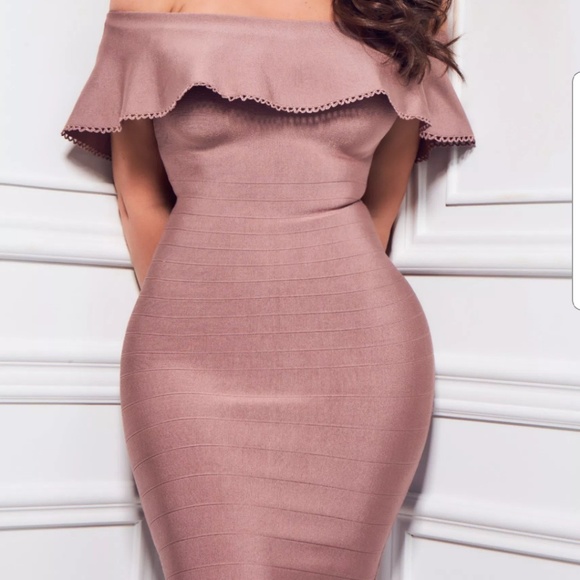Bodycon, short for body-conscious, is a style that has traversed the realms of fashion for decades, morphing and adapting to the ever-changing tastes and trends of society. Originating in the mid-20th century, this form-fitting silhouette has undergone a fascinating evolution, transitioning from its humble beginnings to becoming a staple in contemporary fashion.
In this exploration, we delve into the journey of bodycon, tracing its roots in vintage fashion to its prominence in modern trends.
Modern Trends of Bodycon Dresses
- The Birth of Bodycon: Vintage Inspirations (1950s-1960s)
Bodycon fashion finds its roots in the post-World War II era when women’s fashion began to embrace more form-fitting styles. In the 1950s and 1960s, iconic figures like Marilyn Monroe and Brigitte Bardot popularized the hourglass silhouette, adorned in figure-hugging dresses that accentuated curves.
These early iterations of bodycon emphasized femininity and sensuality, often crafted from fabrics like jersey and knits, designed to mold to the contours of the body.
The rise of bodycon during this period marked a departure from the loose, boxy silhouettes of the previous decades, reflecting a societal shift towards celebrating the female form. Bodycon dresses of this era were characterized by their simplicity, often featuring modest necklines paired with tailored waistlines, exuding an aura of elegance and sophistication.
- Bodycon in the 1980s: Power Dressing and Bold Statements
The 1980s witnessed a resurgence of bodycon fashion, fueled by the era’s obsession with power dressing and bold, assertive styles. Iconic designers like Hervé Léger pioneered the use of stretch fabrics like spandex and Lycra, creating form-fitting garments that hugged the body like a second skin. Bodycon dresses became synonymous with confidence and empowerment, favored by career-driven women who sought to make a statement in the boardroom and beyond.
This era saw the emergence of bold colors, striking patterns, and daring embellishments in bodycon designs, reflecting the exuberance and extravagance of 1980s fashion. Shoulder pads, neon hues, and metallic accents adorned bodycon dresses, embodying the spirit of excess that defined the decade.
- The Revival of Bodycon: 21st Century Resurgence
In the early 2000s, bodycon fashion experienced a revival, propelled by a new wave of celebrities and influencers who embraced its figure-enhancing allure. Reality TV stars like Kim Kardashian-West became synonymous with the bodycon aesthetic, flaunting their curves in form-fitting ensembles that commanded attention.
The 21st-century iteration of Bodycon transcended traditional boundaries, incorporating innovative fabrics, textures, and design elements to cater to diverse tastes and preferences. From sleek midi dresses to daring cut-out styles, bodycon evolved to accommodate the evolving needs of modern fashionistas, offering versatility and sophistication for every occasion.
- Modern Trends: Redefining Bodycon for the Digital Age
Today, bodycon continues to reign supreme in the fashion landscape, undergoing constant reinvention to align with the zeitgeist of the digital age. Designers and brands leverage advancements in technology and manufacturing techniques to create bodycon garments that marry style with comfort and functionality.
Social media platforms like Instagram and TikTok have become instrumental in shaping contemporary bodycon trends, with influencers and fashionistas showcasing their interpretations of the silhouette to millions of followers worldwide. From bodycon jumpsuits to athleisure-inspired sets, the possibilities are endless, reflecting the diverse and inclusive nature of modern fashion.
- Conclusion: The Enduring Legacy of Bodycon
The evolution of bodycon from its vintage origins to modern trends is a testament to its enduring appeal and adaptability. What began as a simple silhouette in the 1950s has transformed into a global phenomenon, transcending generational boundaries and cultural divides.
As we look towards the future, one thing remains certain: bodycon will continue to evolve and innovate, reflecting the ever-changing landscape of fashion and society. Whether it’s a classic little black dress or a daring statement piece, bodycon will always hold a special place in the hearts of fashion enthusiasts worldwide, reminding us that confidence and self-expression are timeless virtues.
In conclusion, the journey of Bodycon from vintage inspirations to modern trends is a captivating narrative that encapsulates the evolution of fashion itself. From its humble beginnings to its current status as a global fashion staple, bodycon remains a symbol of empowerment, confidence, and self-expression for generations to come.

